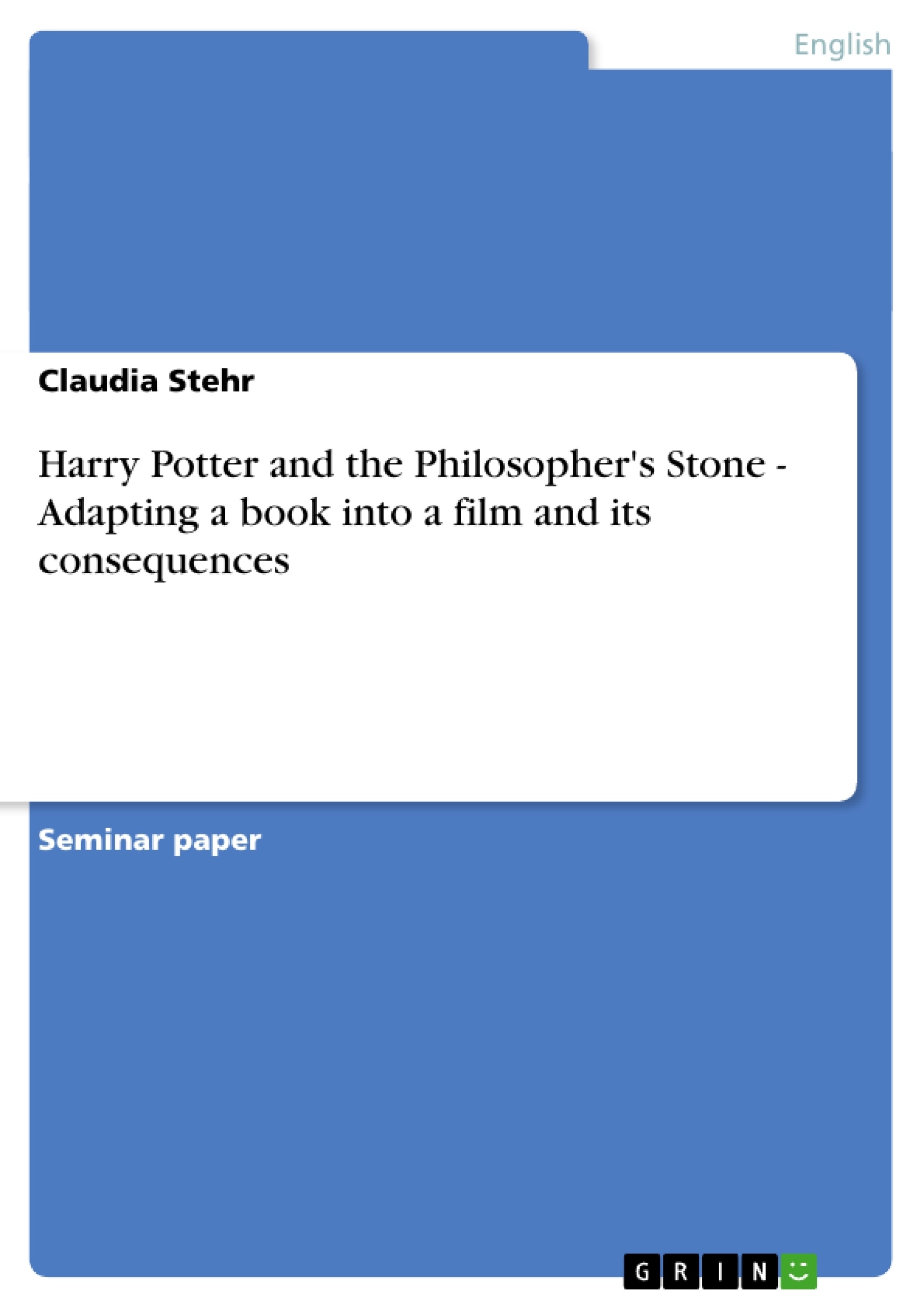When adapting a book into a film, different decisions have to be made concerning the narration, tense, point of view, and other formal devices. (Cf. Whelehan 1999: 9)
This essay examines the differences and similarities between the novel Harry Potter and the Philosopher’s Stone and its film adaptation. It points out problems that occur when transposing a text to screen, and raises the question of the film’s authenticity towards the novel.
Firstly, different critics are going to be scrutinized to get a better understanding of the discrepancy between literary criticism and film studies. Secondly, the characteristics of each medium shall be pointed at, combined with possible arising advantages and disadvantages. The following section evaluates the fictional source Harry Potter and the Philosopher’s Stone versus the filmic source, asking the question of the primary importance of the origin text. For a concise analysis of book and film, I provide a sequence protocol and chapter record in the appendix. Lastly, I want to consider the issue of popular culture, and examine the question of the demand of popular literature to be turned into a film. The focus of examination will always be the first Harry Potter book and film version, although some references to the later volumes are made. Yet, it would go beyond the scope of this paper to consider all written and filmic sources of the Harry Potter phenomenon.
Inhaltsverzeichnis (Table of Contents)
- Introduction
- Literary Criticism versus Film Criticism
- Characteristics of fictional and filmic sources
- Comparison of the book and the film Harry Potter and the Philosopher's Stone
- Turning popular literature into film
- Conclusion
Zielsetzung und Themenschwerpunkte (Objectives and Key Themes)
This essay aims to analyze the differences and similarities between the novel Harry Potter and the Philosopher's Stone and its film adaptation. It examines the challenges of adapting a book to the screen, raising the question of the film's authenticity in relation to the original text.
- The discrepancy between literary criticism and film studies
- The characteristics of each medium and their potential advantages and disadvantages
- The impact of popular culture on the demand for film adaptations of popular literature
- The relationship between the popularity of the film and the literary text
- The consumption of novels and films in relation to their adaptation
Zusammenfassung der Kapitel (Chapter Summaries)
- Introduction: This chapter introduces the topic of adapting books into films, emphasizing the need to make choices about narration, tense, point of view, and other formal elements. It outlines the essay's focus on examining the differences and similarities between the novel Harry Potter and the Philosopher's Stone and its film adaptation, exploring the challenges of this process and the question of the film's authenticity.
- Literary Criticism versus Film Criticism: This chapter delves into the historical context of film adaptation, highlighting contrasting perspectives on the relationship between literary and cinematic works. It examines criticism from figures like Leo Tolstoy, Gabriel Miller, and Bluestone, who offer contrasting views on the merits of film adaptation versus the original literary text.
- Characteristics of fictional and filmic sources: This chapter analyzes the specific characteristics of each medium, identifying their distinct aims, emphases, priorities, and production processes. It explores the challenges of adapting a written narrative to an audio-visual format, considering the unique capabilities of both mediums.
Schlüsselwörter (Keywords)
This essay explores key concepts related to film adaptation, including literary criticism, film studies, fictional and filmic sources, adaptation challenges, authenticity, popular culture, film popularity, novel popularity, and the consumption of novels and films.
- Citation du texte
- Magistra Artium Claudia Stehr (Auteur), 2004, Harry Potter and the Philosopher's Stone - Adapting a book into a film and its consequences, Munich, GRIN Verlag, https://www.grin.com/document/73832



